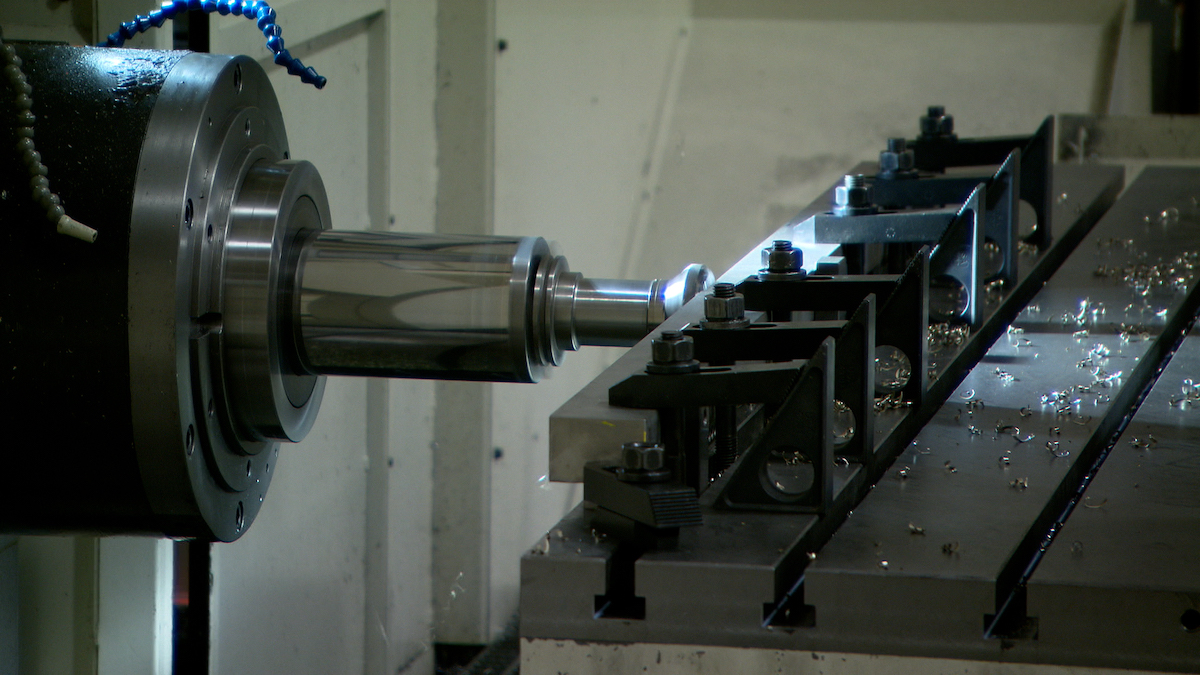The Role of CNC Milling Machines in Precision Metal Fabrication

Numerous types of CNC machines are used in precision metal fabrication, helping to streamline operations, ensure repeatable processes, and produce ultra-precise tolerances.
CNC milling machines are among the most complex and versatile types of computerized numerical control equipment. What sets CNC milling apart from other systems, and what types of capabilities should a defense contractor or commercial purchasing manager look for when choosing a precision metal fabrication company?
VIEW RELATED CONTENT: Metal Fabrication RFQ Checklist
What is CNC Milling?
CNC milling uses an industrial computerized machine to remove portions of a metal workpiece using rotating cylindrical cutting tools. The process can produce highly complex parts with ultra-tight tolerances within 0.0001 of an inch. They generally operate on a horizontal or vertical axis. Some CNC milling machines can cut at varying angles and up to five axes.
Vertical vs. Horizontal Milling Machines
There are generally two types of CNC milling machines used in precision metal fabrication, and each has its place in a manufacturing setting.
Vertical Mill
Vertical milling carries the cutting tools on a spindle that is mounted to a vertical column or arm. The tools cut materials that are affixed to a horizontal work surface, similarly to a table, which moves up and down. Vertical milling operates on three axes including X-axis, Y-axis, and Z-axis and will generally mill one side of the workpiece at a time. They are typically less costly than horizontal mills and are easier to operate because of their user-friendly controls and generally simpler programming.
Vertical Milling Machine Applications
- Smaller, single-sided workpieces
- Complex plunge cuts and drilling
- Complex curved parts and specialty brackets and bases
Horizontal Mill
A horizontal milling machine has a spindle that is mounted horizontally and is generally suited for heavier or bulky metals. An advantage of a horizontal mill is that the material can rotate, allowing for greater complexity and cutting on multiple orientations of a workpiece.
Horizontal milling also creates cleaner cuts and more precise tolerances. It also results in longer tool life. This is due to cleaner chip evacuation. On a vertical milling machine, materials that are cut away from the surface can fall back onto the cutting area, adding wear to the tools. With horizontal milling, gravity allows discarded materials to fall away from the work surface. As such, you’re not double-cutting metal chips, allowing for a better surface finish.
Horizontal Milling Machine Applications
- Highly complex parts that require tooling in multiple orientations
- Intricate shapes, slots, grooves, details, holes, or pocketing
- Three-dimensional or irregular parts
- Large or heavy parts with sizable surface areas, such as those used in industrial or defense applications
CNC Milling Machine Axes
The number of axes that a machine operates on directly correlates to the complexity of parts that it can create.
- 2-Axis Milling Machines — Limited to cutting in the X and Z axes on one side of a workpiece (typically for cutting holes and slots)
- 3-Axis Milling Machines — A milling machine that cuts in the X, Y, and Z axes. The workpiece will need to be turned over to complete the other side
- 4-Axis Milling Machines — Can rotate on the X axis to cut detailed angles and designs on all sides
- 5-Axis Milling Machines — Can rotate on the X axis and the Y axis and allows for the greatest complexity and intricate machining of three-dimensional parts
Uses of CNC Milling Machines
CNC machines come in all sizes to accommodate various workpieces. Equipment can take up a significant footprint within a facility, and some companies may not have the capacity or capabilities to produce large workpieces. For example, Fox Valley Metal-Tech invested in a heavy-duty horizontal machining center that can handle workpieces up to 78.7" x 94.4" and weighing up to 44,000 lbs.
Parts that require geometric dimensioning and tolerancing (GD&T) typically require machining or milling to achieve tight tolerances. Holes or slots in a large electrical enclosure may seem like they would require a simple drilling process, but when their dimensions need to be within 0.0002 tolerance, a specialty CNC machining center is required.
Just because a precision metal fabrication company invests in CNC milling equipment doesn’t mean they possess the abilities to produce complex weldments and parts. Even though much of the work is computerized, the proficiency of engineers, CNC operators, and CNC machinists is of equal or greater importance.
These teams are responsible for programming the machinery, setting up tools, troubleshooting mechanical issues, reading blueprints and part drawings, inspecting parts, and ensuring quality from start to finish.
CNC machines are a necessary part of precision fabrications and so are the craftsmen and women who operate them. To learn more about Fox Valley Metal-Tech’s capabilities and expertise, contact our team. We’re happy to talk through your project and explain our approach to precision fabrication in detail.
Also be sure to access our RFQ guide below.
